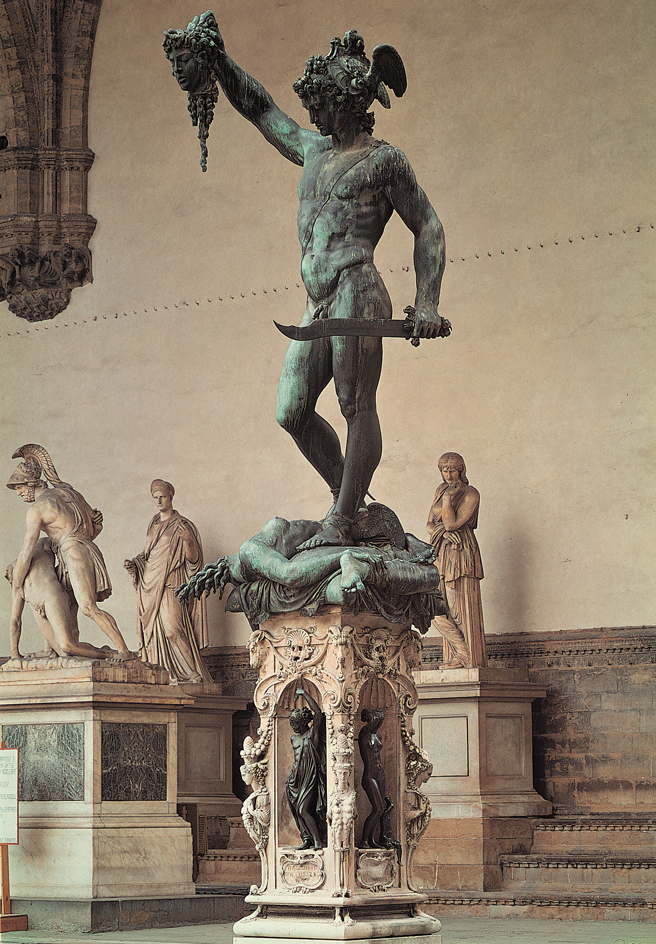Cellini, Benvenuto << chuh LEE nee, `behn` vuh NOO toh >> (1500-1571), was an Italian goldsmith and sculptor. Although he was regarded as an outstanding sculptor during his lifetime, it is doubtful whether his name would mean much today were it not for his writings. Cellini began writing his Autobiography in 1558. The unfinished work follows the bragging, arrogant Cellini through adventures in the courts of Rome, Florence, and Paris.
Cellini’s story is instructive as well as entertaining. It takes the reader through such historical events as the siege of Rome in 1527, and introduces people of his time in such a way that they seem to live again. He vividly describes every step of the casting of his masterpiece, Perseus. Cellini says that the completion of Perseus was hailed with joy throughout Italy. This is typical of his exaggerations. However, critics have praised Perseus for its expressive outlines and striking patina (oxidized surface).

Cellini’s only identifiable work as a goldsmith, except for some coins and medals, is an elaborate silver and gold table ornament known as the Saltcellar of Francis I. It was done in the 1540’s. The forced poses, elongated proportions, and rich ornamentation show the influence of both the movement known as mannerism and of Michelangelo. The same ornamentation appears in Cellini’s bronze relief of the goddess Diana, called Nymph of Fontainebleau (1543-1544). Cellini was born on Nov. 3, 1500, in Florence. He died on Feb. 13, 1571.
